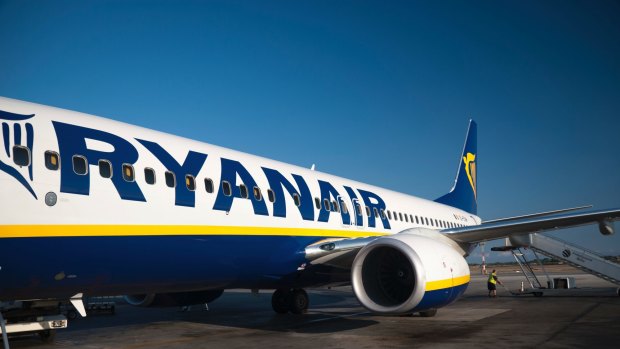
The successor to Ryanair's irritating on-time fanfare has arrived, but what's your verdict?Credit: iStock
Nearly a decade after it first floated the idea of $US10 ($AU13) flights between London and New York, Ryanair, Europe's largest discount airline, is once again dangling the possibility of ultracheap travel across the Atlantic.
The service is still at least four years away, and it might be that talk of such rock-bottom fares is nothing more than a promotional gimmick. Still, the prospect of Ryanair's entering the trans-Atlantic market can only cause new anxiety for Europe's biggest carriers as they struggle to compete against nimbler rivals at home and abroad.
"It's the kind of thing that ought to make the European majors quake in their boots," said Peter Morris, chief economist at Ascend, an aviation consulting firm based in London.
On Monday, Ryanair, based in Dublin, confirmed reports that its board had approved a loose plan to begin operating "low-cost" flights between two dozen cities in Europe and the United States around the turn of the decade.
"European consumers want lower-cost travel to the USA, and the same for Americans coming to Europe," the airline said in a statement. "We see it as a logical development in the European market." It declined to comment further on the board's move, which was first reported by the Financial Times.
Michael O'Leary, Ryanair's chief executive, has long wanted to replicate the airline's success on the lucrative routes linking Europe and North America. But until now, Ryanair has seemed to prefer watching from the sideline.
Norwegian Air Shuttle, based in Oslo, began flying trans-Atlantic in 2013 and operates discounted flights to a half-dozen US cities, including New York and Los Angeles, from European bases in Copenhagen, Stockholm and Gatwick Airport, near London, with one-way fares as low as $US244.
This month, Lufthansa, the German flagship carrier, detailed its plans to start offering in October a handful of budget flights from Cologne, Germany, to tourist destinations in Cuba and the Dominican Republic under its nascent international budget brand, Eurowings. One-way fares will start around $US100. WOW, a low-cost Icelandic airline, recently began marketing services between Reykjavik and several East Coast cities in the United States for as low as $US99 one way - with onward connecting service to Gatwick for an additional $US72 or so.
But analysts say it is unclear how many of these cheap fares are - or ever can be - sustainably profitable. Norwegian Air, for example, swung to a net loss of more than 1 billion krone, or about $US120 million, in 2014 amid heavy investments in new aircraft to support its long-haul expansion plans.
Cheap flights over longer distances have always been a tricky business formula for carriers - mainly for reasons of cost and logistics but also in terms of passenger comfort. Ryanair has long said that it would eventually need to break with its current system of one-class seating to offer a significant number of premium-economy or even business-class seats on its planes. Kenny Jacobs, Ryanair's chief marketing officer, told The Financial Times that the airline would probably earmark as many as half of the seats on any trans-Atlantic flight to higher-paying passengers.
Jacobs told the Financial Times that Ryanair expected most of its one-way tickets from London to cost upward of $US145. Yet such fares would still be well below the $US500 to $US700 that major European and US carriers routinely charge for round-trip economy-class flights across the Atlantic today.
Even before receiving the blessing of its board, Ryanair had long said that any trans-Atlantic expansion would be contingent on acquiring a fleet of long-range jets - most likely among the latest generation of fuel-thrifty wide-body jets like as the Boeing 787 or Airbus A350 - at a reasonable price. But both manufacturers are still struggling to increase production rates of such planes.
"At the moment there is a scarcity of aircraft that is keeping the prices up, particularly for new aircraft," said Morris, the Ascend chief economist. Ryanair, Europe's largest carrier by number of passengers, will also need to contend with the challenge of brand recognition in the United States.
"You are basically starting from zero there," Morris said.
THE NEW YORK TIMES
Sign up for the Traveller Deals newsletter
Get exclusive travel deals delivered straight to your inbox. Sign up now.